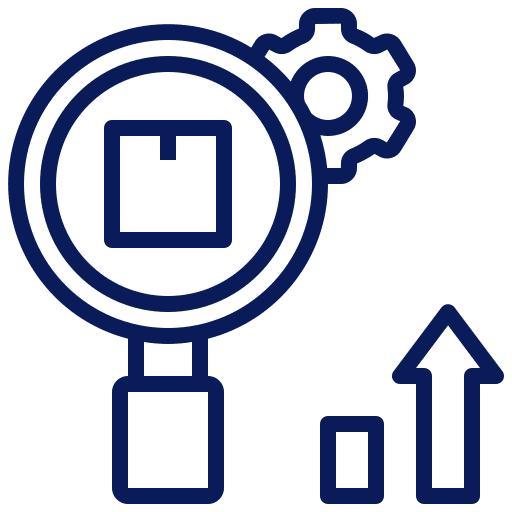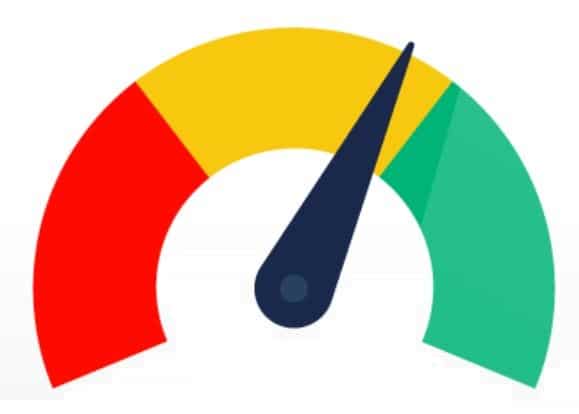Google, the search giant, constantly refines its algorithms in order to ensure that users get the most reliable and relevant results. These updates are targeted towards enhancing the assessment of quality content, providing beneficial search results and improving the user experience.
In the effort to improve search experience for users, small and major algorithm updates don’t make a distinction between particular websites or pages and are not tied in any way to any manual processes. Each time, Google releases a broad core update to its algorithms and systems that cause debates and worries among webmasters and marketers as many websites get a hit in rankings, others improve.
Why Google Algorithm Updates are Needed?

The staggering scale of the Google Search index requires frequent updates in order to stay relevant and ensure quality of search results. There have been various algorithm changes over time that can drastically affect search rankings for many websites. While these updates are no doubt important to ensure user experience is improved, it does often make it difficult for businesses to keep up with any changes and control their impact as they happen.
Fortunately, there are now a number of tools and resources available for those wishing to better understand unconfirmed search updates and how they may affect their website’s performance in the long run. Keeping an eye on recent developments can help SEOs and marketers better prepare themselves for any potential turbulent times ahead. While this can’t protect them from every single update, it’s certainly a useful way of staying one step ahead of the competition!
How Often does Google Release Algorithm Updates?

Google Algorithm Updates unfold periodically, with the search engine making changes to its search algorithm to enhance the quality of search results. Google doesn’t follow a strict schedule when it comes to releasing algorithm updates. Instead, updates can happen several times a year, with both minor and major changes. The frequency of Google Algorithm Updates varies, with minor updates occurring daily and major updates happening a few times a year.
Minor updates may not significantly impact rankings, while major updates can lead to noticeable shifts in search results and website rankings.
Types of Algorithm Updates

Google’s algorithm updates can be broadly categorized into two types: core updates and specific updates. Core updates are significant changes to the main search algorithm and can lead to substantial fluctuations in rankings. On the other hand, specific updates target particular aspects of search, such as mobile-friendliness, page speed, or local search.
Some examples of major Google Algorithm Updates in recent years include the Penguin update in 2012, which targeted link spam and penalized websites with low-quality links. The Panda update, rolled out in 2011, focused on content quality and aimed to reward websites with high-quality, original, and relevant content. Other latest core updates are Helpful content update, mobile-friendly update, page speed update, product reviews updates and spam updates. Their names indicate their focus. All to provide a more positive user search experience.
Core Update Signals

Understanding the signals of core algorithm updates is the key to diagnosing any traffic loss or ranking changes for your website. When major algorithms are released, websites that may have previously performed well on Google’s SERP can suddenly take a beating. This can be incredibly frustrating, but it’s important to look in the mirror before blaming Google. It is possible that something you have done or failed to do has caused your ranking problems so step one is to determine whether this is a factor or if it could potentially be related to an update.
It’s no secret that post-update analysis looks at two factors in particular: your site’s performance and what could have changed with SEO best practices – not just during the update but preceding it as well. There could be plenty of issues that simply stem from website deficiencies such as slow page load times, broken image links, too low quality content, duplicate URLs etc. Make sure you do a thorough diagnostic on these potential culprits and cover all bases before leaping into conclusions about an update being responsible for traffic loss.
What to do During Algorithm Updates?

If you find that your website’s organic traffic takes a dip with an algorithm update, it’s a good plan to get patient and allow time for things to settle down before taking an action. That’s because updates can spark temporary shifts in organic search ranking as search engines fine-tune how they rank websites.
Follow these Steps:
- Checking Things Out Initially (About 1-2 Weeks): Right after the Google Core Algorithm, keep an eye on your website’s organic rankings, and traffic, on a daily basis. See how things are flowing using Google Search Console and Google Analytics (or any analytic tool you use). It’s not uncommon for things to be a tad shaky during this time while search engines are getting their results just right.
- Giving Things Time to Settle (Around 2-4 Weeks): Give it a few extra weeks for things to even out. During this stretch, search engines are likely still figuring out how the update has affected different websites.
- Taking a Closer Look (Approximately 4-6 Weeks): Once about a month has gone by since the update, roll up your sleeves and take a deep dive into a detailed analysis of how your website is doing. Look for any patterns among the pages that got hit, and try to figure out if there’s something common causing it.
- Making Changes and Tweaks (Around 6-8 Weeks): Based on your analysis, it’s time to start making some smart changes to your content and optimization tactics. You might want to boost the quality of your content, work on optimizing different on-page elements, and make sure your website’s technical bits are all up to scratch.
- Keeping an Eye on Things (On a Regular Basis): Even after you’ve done some tweaking, keep a close watch on your website’s performance over the next weeks and months. Be prepared for some more ups and downs as search engines keep finetuning their algorithms.
- Getting Expert Advice (It Varies): If you’re not quite sure about the best steps to take or if your website’s drop in performance is really causing a dent in your business, consider getting help from SEO experts. They can give you customized advice based on what’s going on with your site.
Remember, every website is its own unique situation, so the time it takes to bounce back can be different. While it’s a good call to give things time to settle, if you’re seeing a long-lasting and big drop, it might be worth taking action earlier. The key is finding the right mix of being patient and getting proactive to get your website’s groove back effectively.
Use Data to Identify Content that Needs Improvement

Once a broad core algorithm roll out has been completed, SEOs need to identify the content that has seen a particularly negative impact from the update. One of the best ways to do this is by utilizing existing SEO tools such as Ahrefs or Semrush, which often offer specific position tracking features that make detecting outlier drops in rankings much simpler. Additionally, Google’s Search Console and Analytics can be used to detect any major decreases in traffic, making it easy to compile a spreadsheet of pages that have suffered substantial drops.
Compiling this ‘problem page’ data sheet should be done systematically and with utmost care; after all, this information could be the determining factor deciding whether a website bounces back with an algorithm update or remains stagnant. Once you’ve collected enough data through SEO tracking tools and services like Search Console & Analytics, use this list of problem pages combined with any available keyword research data to rewrite and optimize them for better visibility and engagement within search.
SEO Tactics that Help Improve Your Organic Performance

Here are the essential SEO tactics that will help you optimize your organic performance:
1. Content Optimization
The key to an effective protection and response to a negative impact lies in high-quality content. Implementing Google’s guidelines for the creation of relevant and authoritative content is crucial. Making sure that you update and optimize your content regularly according will positively impact search results. You will need to post fresh content and verify that your targeted search queries match user intent.
You must activate an effective content strategy that takes into account your target audience, algorithm updates, search ranking factors and your current website search traffic.
2. On- Page Audit
If your website’s ranking drops post major updates, don’t panic. Instead, conduct a thorough audit the affected pages, their search queries and search rankings. look into the metrics that measure engagement of users such as bounce rate and think about seeking external evaluations for insights.
3. Technical SEO Review
Review and fix technical issues such as broken links and duplicates pages, optimize your sitemaps, ensure your website is accessible and optimized for mobile devices, to name a few. Assess your website’s loading time vs top ranking pages, Core web vitals, mobile experience, prioritise fixes and improve accordingly.
Core Update Recovery Checklist
Here is a checklist that will help you track and monitor what is needed.
- Impact Assessment
- Monitor Ranking and Traffic Changes
- Identify Affected Pages and Keywords
- Analyze User Engagement Metrics
- Content Evaluation and Enhancement
- Assess Content Relevance and Quality
- Update Outdated Information
- Add Supplementary and Supportive Content
- Technical SEO Audit
- Review Site Architecture and Internal Linking
- Check for Mobile-Friendliness
- Ensure Fast Page Loading Speed
- Backlink Analysis and Cleanup
- Audit Backlink Profile
- Disavow Toxic or Irrelevant Backlinks if needed
- Focus on Building High-Quality Backlinks
- User Experience Enhancement
- Improve Website Navigation
- Enhance Readability and Formatting
- Optimize Call-to-Action Elements
- E-A-T and Expertise
- Demonstrate Expertise in Your Niche
- Showcase Authoritativeness and Trustworthiness
- Leverage Testimonials and Credentials
- Local SEO Consideration
- Update NAP (Name, Address, Phone Number) Information
- Obtain Positive Local Reviews
- Optimize Google My Business Profile
- Mobile Optimization
- Prioritize Responsive Design
- Optimize for Voice Search
- Implement Structured Data Markup
- Social Media Engagement
- Increase Social Signals
- Encourage Social Sharing
- Build a Strong Online Community
- Continuous Monitoring and Adaptation
- Stay Informed About Industry Trends
- Regularly Track Algorithm Changes
- Adapt and Evolve Your Strategy
- Avoid Common Mistakes
- Keyword Stuffing
- Thin or Duplicate Content
- Neglecting Mobile Users
Related content:
- Read our expert SEO guides for specific types of businesses
- Join our community events and workshops
SEO KPIS To Track And Continuously Monitor

- Organic Traffic: Keep an eye on any fluctuations in organic traffic to gauge the impact of the algorithm update on your website’s visibility in search results.
- Keyword Rankings: Monitor changes in keyword rankings to understand how the update has affected your website’s performance for specific search terms.
- Click-Through Rate (CTR): Track CTR changes for your top-ranking keywords to see if the update has influenced how users interact with your search listings.
- Bounce Rate: Observe any changes in bounce rate, as it could indicate whether users are finding your content relevant and engaging after the algorithm update.
- Page Load Speed: Algorithm updates often consider user experience factors, so monitoring page load speed can help ensure your website meets performance expectations.
- Backlink Profile: Keep an eye on changes in your backlink profile to identify any potential impact on your website’s authority and credibility.
- Conversion Rate: Analyze any fluctuations in conversion rates to understand how the algorithm update has influenced user behavior on your site.
- Pages Per Session: Monitor if users are exploring more pages per session, indicating improved engagement and navigation after the update.
- Dwell Time: Track changes in dwell time (how long users spend on your pages) to assess the quality and relevance of your content post-update.
- SERP Features: Observe if your website is appearing in featured snippets, knowledge panels, or other SERP features, as algorithm updates can impact these placements.
- Mobile Performance: With mobile-friendliness being a crucial factor, track mobile traffic, usability, and conversions to ensure your site is optimized for mobile users.
- Local SEO Metrics: If applicable, monitor changes in local search rankings, local pack placements, and reviews to assess any local SEO impacts.
- E-A-T Signals: Keep an eye on Expertise, Authoritativeness, and Trustworthiness signals, as algorithm updates may emphasize these factors.
- Crawl Errors: Regularly check for crawl errors and indexation issues to ensure that your site is being properly crawled and indexed after the update.
- Social Signals: Monitor social media engagement and shares, as they can indicate how users perceive and interact with your content post-update.
Conclusion
The journey to optimal search visibility can be a transformative one. Should you seek guidance about search engine optimization, don’t hesitate to reach out to SEO Transformer. An SEO agency based in Geneva Switzeland, whose doors are open for a free consultation with our SEO professionals who can help you navigate these digital waters with confidence. Let’s elevate your online presence together. Contact us today!




